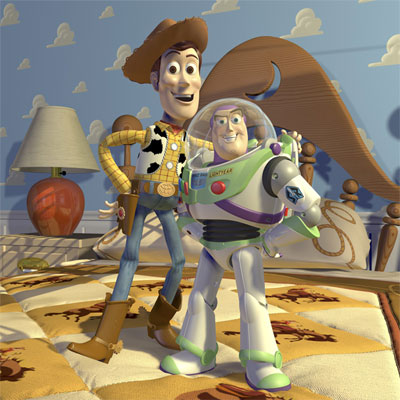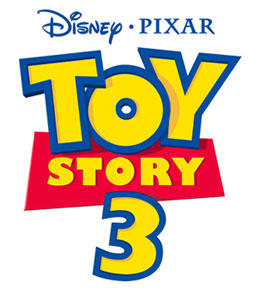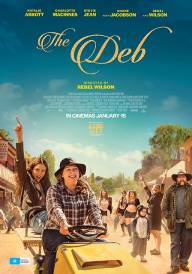Lee Unkrich Toy Story 3 Interview,

LEE UNKRICH ON TOY STORY 3
By Paul Fischer at Comic Con.A little over a decade since we saw the last of Woody and Buzz in Toy Story 2, this most beloved of Pixar franchises will return to movie theatres next year with Toy Story 3, under the direction of Lee Unkrich who had co-directed seminal Pixar classics as Finding Nemo and Toy Story 2. Though tight-lipped about what audiences can expect from the third film, Paul Fischer did try to get a preview from the director during a brief interview at Comic Con.
QUESTION: How much stuff did you guys come up with in the last ten years, since Toy Story 2?
LEE UNKRICH: Well, the interesting thing is that when the movie comes out, it will have been 11 years and a lot of us have not only been at Pixar for those 11 years, but we've been there much longer, because we've been there since the first Toy Story or even before, and we've lived a lot of life in this time. A lot of us have gotten married, we've got kids, our kids have been growing up. I remember when we were making Bug's Life, John Lassiter used to have his kids come in and crawl under his lap, and they were really little guys. And now one by one, he's sending them off to college. So, a lot of that is informing, just emotionally, what we're doing in Toy Story 3.
QUESTION: But specifically, they were dealing with the prospect of their caretaker growing up. I mean, that's why it's so sad, that "Jesse's Song."
LEE UNKRICH: Well, in that song, we took a character who we didn't really know yet, in Toy Story 2, and we put her through that, and we saw what she'd been through emotionally. But now, we're going to see how it affects our main characters, to be in a similar situation.
QUESTION: Can you talk about how the technology has evolved, and how much you use that technology in this third one? It's obviously going to be in 3D, which is another fresh point of view.
LEE UNKRICH: Well, you know, if you've been watching our movies over the years, you know that each one has gotten more and more beautiful-looking, I think, than the last and more sophisticated. It's not just the technology, but also the artistry at the studio. So when we sat down to start working on Toy Story 3, we knew that we were capable of making a really, really rich, beautiful world, because we'd done it on Ratatouille, and Wall-E. And the decision we had to make was, "How much different do we want this film to look?" Just because we have the technology now to do so much more, do we really want to? Because we wanted Toy Story 3 to fit in the canon of Toy Story 1 and Toy Story 2, and feel of a piece. That being said, we wanted it to look re beautiful. because a lot of things about - especially the first Toy Story that don't look so great now, were really just limitations of the time, limitations of the technology, and limitations of people's artistry at the time. Everyone's gotten so much better. We're very excited - I think we've done a great job of having Toy Story 3 feel like it fits with the other two films.
QUESTION: It does feel organic.
LEE UNKRICH: It feels of the universe, of the world that we created, yet it's exponentially more rich and beautiful and detailed.
QUESTION: Will we be surprised how Buzz and Woody deal with this that they've been anticipating?
LEE UNKRICH: I hope so. I hope you're surprised by everything in the film. I mean, you know, these are characters - we've been working with these characters for so long in our lives for the last 15 years, we feel like we know them. And it's really fun to take them and put them in a situation where we don't necessarily know how they're going to react. And each character is going to react in a different way to the situation. So, that's exactly what happens. Everybody deals with it differently, and that's what drives a lot of the conflict.
QUESTION: But how do they do that? Speaking about the third parts, or the third portion - you have one and two, and now you have this whole other story that, you have to consider your first two universes, and you're going in a third. What was the overriding idea, when you went in to actually think about, "How can we make this just as good as the first two?"
LEE UNKRICH: Well, the last thing we wanted to do was make a movie about these characters going off and having a wacky adventure somewhere. I mean we weren't interested in doing that. And again, hopefully the fact that 11 years have passed since the last film says that we weren't just rushing this out to make some quick cash. We were only making this now because we thought we had stumbled upon a good story to tell, and we wanted it to be as emotionally rich as possible. So when we arrived at the notion of having Andy grown up and about to head off to college, that seemed like the perfect life event to place our story at, to provide that rich, deep emotion.
QUESTION: It might sound weird, but should we expect just this trio - Andy, Buzz, and Woody - to be the focus of it? Or are you bringing a bunch of more new characters into the main plot?
LEE UNKRICH: We have a lot of new characters. We haven't announced many of them, but - Ken is a new character, but yeah. all of the main characters are back from the other movie, and we've added into that mix quite a few new characters. I mean, we actually have more characters in Toy Story 3 than any film that we've made at Pixar.
QUESTION: Was it a challenge for you to persuade all your original voice cast to return for this? I mean, was there any reticence on their part?
LEE UNKRICH: None. None. I mean, we stay in touch with all these actors during the years. And every time we would bump into Tom Hanks or Tim Allen or anyone, they would always ask, "When? When is Toy Story 3?" They all wanted to do it, and they were all instantly on board and excited to be a part of it.
QUESTION: What themes are we going to find audiences are going to connect with?
LEE UNKRICH: That's territory I can't go into yet. I mean, I feel odd doing press this early for the film. But, you know, we've revealed so little about the story, and the plot. I mean, we keep it that way for now, just so that it's exciting for people. Even on a thematic level, I don't know if we want to go there. I mean, hopefully just by nature - the point that we're setting the story at, you can fill in some of the gaps there.
QUESTION: Can you say how much fun you've had with Ken?
LEE UNKRICH: He's been awesome. When we decided to have Ken in the film, I had a very specific vision of which Ken I wanted to have in the film, because there've been a lot of Kens over the years; Sometimes he has real hair, sometimes he has molded hair. But there was a Ken kind of from the late-'80s that's my personal version of Ken, that kind of really smarmy, moulded plastic feathered hair. And I knew from the get-go that that's the one that we had to go with. And Michael Keaton came to us very early on, when we started to think about, who would be the perfect voice of Ken. So, we were really thrilled that he was on board with the idea of doing it.
QUESTION: Do you have to redesign Andy's room from scratch, or can you dress up the old Andy's room?
LEE UNKRICH: Are you talking about the technology, in terms of what he had, and what he had made?
QUESTION: Or, an 18-year-old's room looks like an 18-year-old's room. You've got to change his room.
LEE UNKRICH: Well, again, you know, you can use your imagination. And - you know, it would be kind of weird if an 18-year-old was still living in the room of Toy Story 2.
QUESTION: Technologically, do you take the setting and say - like, can you use any elements?
LEE UNKRICH: We can use a lot of design, because a lot of that great design work had been done on the other movies. But we now had to fill in those ensuing - you know, six, seven years in Andy's life, from where we were in two, to three.
QUESTION: When this movie comes out, they're re-releasing 1 and 2, as I understand it.
LEE UNKRICH: Yeah, in the beginning of October.
QUESTION: How different is this - I mean, what changes, if any, have been made to the first two films in their re-release?
LEE UNKRICH: Oh, we didn't do anything to the first two, other than reproduce them in 3D.
QUESTION: And how do you think doing that benefits the story, of 1 and 2?
I mean, why have it in 3D? Why have those two movies in 3D?
LEE UNKRICH: Well, partly because we can. I mean, this is something that - we've all been big fans of 3D over the years. And really, until digital projection came into its own, just in the past few years, there was really no way, economically, to exhibit 3D very effectively. Have it look very good, or have it be cost-effective. And now, because so many theaters have digital projection in them, for the first time, we really can do it. That's why you're seeing so much 3D stuff out there. So, we've always loved 3D. Even when John Lassiter was doing shorts, he did a short called Knick Knack that he produced in 3D. We always knew that to produce a 3D version, for us, it was really as simple - as I said on stage, it's just kind of rendering the other eye view, in the computer system. We still had all this data of where the camera was, shooting these scenes. And we knew if we just set up this other camera and produced that other view and merged them together, we would end up with a dimensional, Viewmaster version of the movie.
QUESTION: Is it also to reintroduce a lot of your audience for 3 wasn't born when 2 came out.
LEE UNKRICH: Oh, definitely. I mean, we want to build excited for 3 coming out. A lot of our audience has never seen the films on-screen in theaters, you know? Our films have such a life at home on DVD at this point, even though people's TVs are getting pretty huge in their homes. There's something very different about seeing them up in a big screen, in a theater.
QUESTION: How close do you think we are to the point where 3D will be a language, and not only a tool?
LEE UNKRICH: Well - I mean, we're at a really interesting time right now. I mean, there are already other of people that kind of bemoan 3D as just being a gimmick, and a way to compete with other entertainment out there. When 3D first came out in the '50s, it was really to combat television. And television was pulling the audience. And now, there are a lot of other sources of entertainment in the world, especially on the internet. So, you know, from a marketing standpoint, studios are very interested in finding ways to get people in the theaters. But for us, creatively, you know, it's just a very cool way to watch a movie. And it will be very interesting in the years ahead to see more and more people designing for 3D in the first place. And our films - we really, as I said, just retro-fitted them into 3D.
QUESTION: The new ones?
LEE UNKRICH: Now with Toy Story 3, because we know it's going to be released in 3D, we're making a lot of choices and a lot of staging decisions that will help that.
QUESTION: Will you repackage Toy Stories 1 and 2 on DVD, on Blu-Ray?
LEE UNKRICH: In terms of them coming out in 3D, or just coming out again in -
QUESTION: Either-or.
LEE UNKRICH: Oh. I mean, I guess you can imagine they would probably come out again at some point, in other formats. They haven't made any announcements about them yet, but - everything's moving towards Blu-Ray now.

Toy Story 3
Starring: Tom Hanks, Tim Allen, Joan Cusack, Don Rickles, Wallace Shawn, Estelle Harris, John Ratzenberger, Ned BeattyDirector: Lee Unkrich
Genre: Childrens Animation
Tom Hanks, Tim Allen, and the the all-star casts of TOY STORY and its sequel return for a third outing as the voices of Pixar's beloved toys. Lee Unkrich, a co-director on TOY STORY 2 and FINDING NEMO, takes the reins for this third film, while LITTLE MISS SUNSHINE screenwriter Michael Arndt pens all the action. This time around, Woody, Buzz, Jessie, and the rest of the toys have their adventures in Disney Digital 3-D.
MORE





